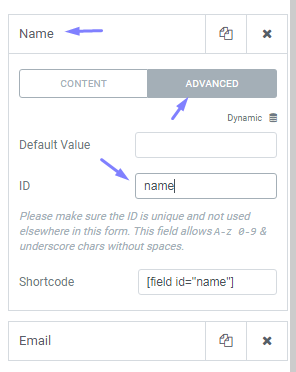The canonical tag, known in English as Canonical Tag, is placed in the source code of a web portal and points to the Canonical URLs that show the same content, or very equivalent content. If it is indicated what is the Canonical URL correctly, it will be used for search engine indexing.
Search engines negatively rate websites that feature duplicate content because they do not offer added value for users. It is recommended to use the canonical tag in order not to be penalized for duplicate content and to use tools such as, for example, the Duplicate Content Checker that helps you recognize this type of content.
Applications
The canonical tag It is used when there is duplicate content or when there are many different URLs through which the same page is accessed.
Example
When the home page is accessed through different URLs (www.domain.com, domain.com, www.domain.com/index.html, etc.). You can find domains with or without bars and with case sensitivity. The server only looks at one IP address but supports variations such as different sessions or product filters.
At the same time, the same content can be present in different versions (Eg press version, PDF, etc.) and published on different external websites.
For this reason it is recommended to include the canonical tag in each and every one of the pages so that all hyperlinks are redirected correspondingly and, possible unforeseen events and erroneous hyperlinks can be avoided.
Canonical URL types
There are two kinds of Canonical URL but Google recommends using the Absolute URLs, that is, the full address of the web portal.
In this circumstance the syntax is the following:
The element contains the canonical attribute and is placed on the element of the source code. It is part of the document metadata and refers to the standard page. It is used only on pages that present similar content to the standard / original page.
Examples
http://www.example.com/examplepage.htm http://www.example.com/examplepage/?session_id=xyz.htm
The first is our standard font. The second is a session generally used in online stores in which information related to its users is stored (Eg the products selected in the shopping cart). In this circumstance, the canonical tag it should be embedded in the header element of our second example.
If the standard URL is a PDF document or any other type of Google compatible document, the canonical tag it is located at the top of the web portal. The syntax is different and the incorporation requires knowledge of hypertext language (HTTP - Hypertext Transfer Protocol):
; rel = "canonical"
summarizing
The canonical tag represents a warning. That is, if the user (Eg browser or search engine) sends a request, the server responds by specifying that it is a canonical URL. Attention: sometimes the server needs to be reconfigured.
Let's now look at the following two URLs:
http://www.example.com/examplepage.htm http://www.example.com/examplepage.pdf
In this circumstance, the second web is the one that should be considered as the standard source. Being a PDF document, the canonical tag it is located at the top of the web portal and indicates to Google that this PDF document is the standard for indexing.
Origin
With the help of the canonical tag the webmaster is able to communicate to search engines which web portal should be treated as the standard source and keep duplicate content under control. For this, the canonical tag it is a very important tool for the optimization of a web portal in search engines.
Frequent mistakes
This tool is very powerful and if the web portal is not used correctly it could go unnoticed by Google. To begin, and most importantly, the webmaster must make sure that the content is simply similar, or almost similar, because only in these cases does it make sense to use this tag.
Examples
With numbered pages with parameters rel = ”next” and rel = ”prev” , it makes no sense to use the canonical labels since, from a technical point of view, it is not considered similar content. At the same time, the web portal must be reachable - the A 404 error code must be avoided. Using the Noindex, "disallow" or "nofollow" tags in combination with canonical URLs is penalized by Google. The canonical tag should not be found in the body of a document and should not be used repeatedly in the metadata.
Web Links
- 5 common mistakes with rel = canonical googlewebmaster-es.blogspot.de






